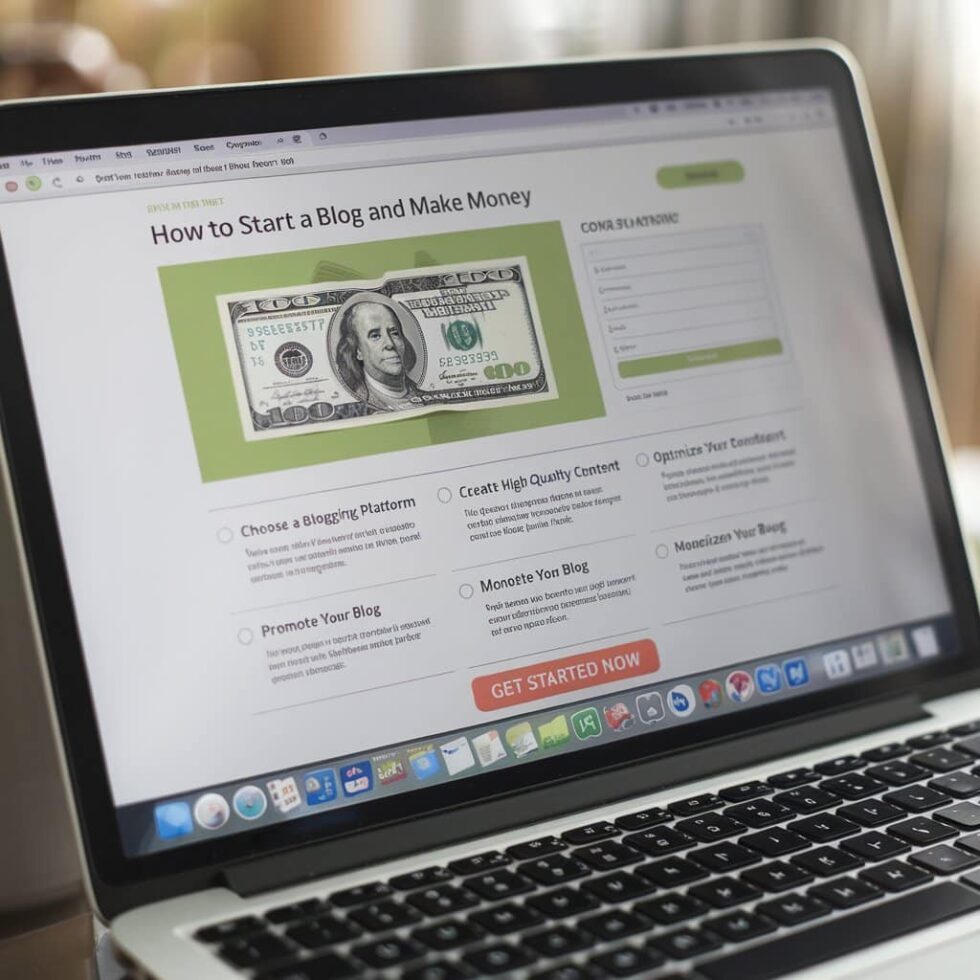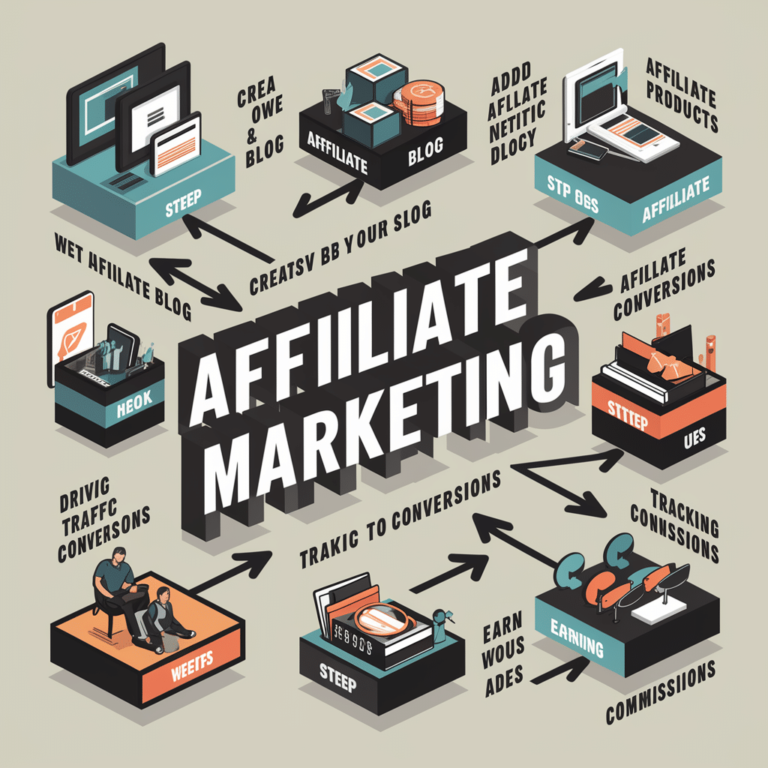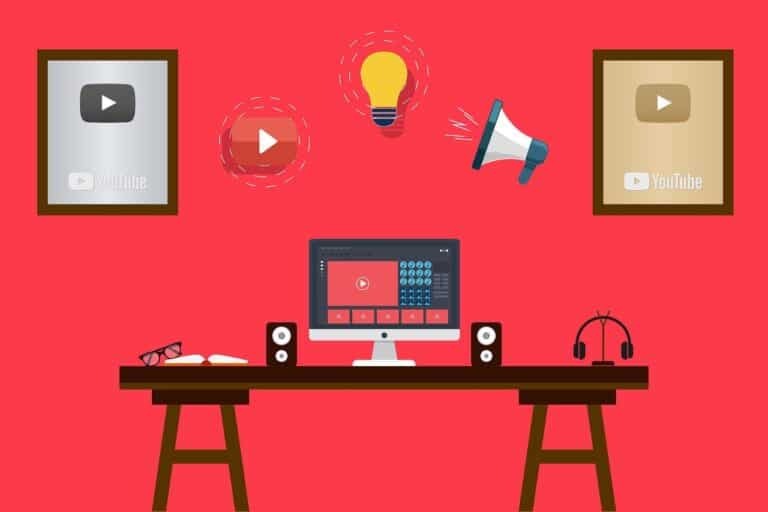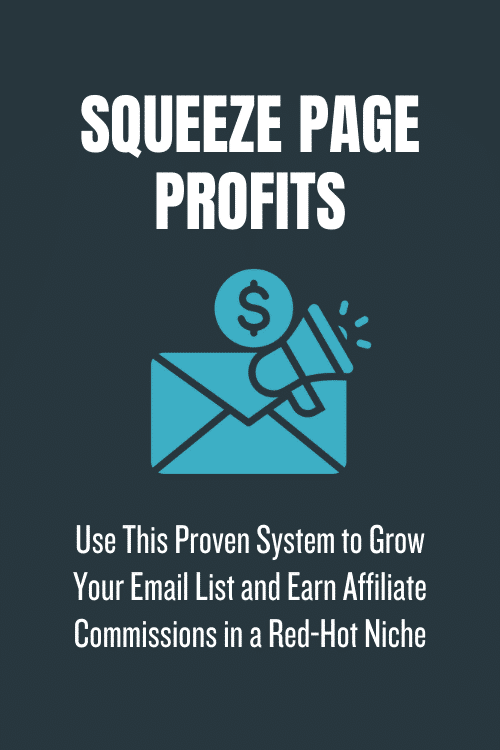Planning Your Blog
Finding Your Niche
Finding your niche is literally the first big step in starting a blog. Defining your niche helps create focused content, attract specific audiences, and eventually establish one’s authority over that niche. Here are a few ways you might want to consider when identifying that niche:
- Passion and Interest: Think about subject areas that you are most passionate about. The blog will require frequent contents for an awfully long period of time, and hence you shall like writing about those subjects.
- Market Demand: Observe the subjects trending in blogging. Some web tools, such as Google Trends or social media, will come helpful in assessing trending topics to find whether your passions match the demand in the market.
- Competition Analysis: Research active blogs currently in your would-be niche. Note their strengths and weaknesses to observe what may be missing that you could contribute with fresh ideas and information.
- Audience Identification: Describe whom you wish to serve. Knowing the needs of your audience will be important to your content strategy so you can add value and resonate with readers.
It is not just about passion, finding your niche means weighing personal interests against the practical considerations of reach versus an audience’s engagement.
Setting Goals and Objectives
After choosing a niche, the next most important thing is to set clear goals and objects of your blogging. This will give direction and a reason for your work, and you will even find it easier to quantify success. When establishing your goals, consider:
- Specificity: Define what it is you want to accomplish. Instead of “I want more readers,” say “I want to reach 1,000 unique visitors per month within six months.”
- Measurable Goals: Allow your goals to be quantifiable. This will present an opportunity for measuring the progress being made. Objectives such as “increase social media followers by 20%” can be measured and analyzed.
- Achievable: Your goal should be realistic, something that you can achieve given your present skill level and available resources. Setting goals too high may bring frustration, but attainable ones will keep you motivated. Relevant: Keep your goals relevant to the core of your blog’s niche and purpose. If your blog tackles finance, for example, then becoming a lifestyle influencer may be off your mark.
- Time-bound: Give your goals a timeline. Having a timeline keeps you accountable and assists in prioritizing activities well.
With a well-niche-defined blog and articulated goals, you will be giving yourself a good foundation on which to start blogging. It is going to go a long way into smoothing the path ahead of you that includes choosing a platform and creating content suitable for your vision.
How to Choose a Blogging Platform

With your blog niche identified and your target audience clearly defined, it’s now down to choosing an appropriate blogging platform. Eventually, your choice of blogging platform will go a long way in giving your blog flexibility in design, among other factors, down to usability. Some of the most popular blogging platforms which bloggers use include those listed below, each with its unique set of features and advantages.
WordPress
Among most blogging platforms used across the world, WordPress is probably the most popular for its versatility in functionality.
- Customization: It boasts of thousands of themes and plugins to further improve your site’s look and functionalities.
- SEO-Friendly: It gives access to built-in SEO tools for optimizing content, making it easy for anyone to build a wider audience.
- Community Support: This open-source software has a large community of active developers ready to assist users whenever needed.
Blogger
Blogger by Google :is another easy-to-use blogging platform, greatly used by bloggers who are just starting to blog.
- Ease of Use: It’s free, easy to get started with it, and easily integrated with other Google services.
Simplicity: Though not as customizable as WordPress, it has enough templates to easily get a blog up and running. - Google Integration: It has built-in analytics that allow the tracking of audience interactions with much ease.
Wix
Wix is a website creation tool but also offers a very visually oriented method of developing blogs.
Drag and Drop Interface: It allows users to develop layouts without prior experience in coding.
Templates: Hundreds of customizable templates are at one’s disposal for different blog areas.
App Market: This provides the users with a Wix marketplace where the users can expand their functionality with the help of apps.
Tumblr
Tumblr is a microblogging platform and is known for solid integration with social media sites.
Community-Oriented: Ideal for publishing all media types and for engaging with your followers.
User-Friendly: Fast in creating a blog, so it’s ideal for amateur bloggers as well.
Personalization: Though not as vast as others, yet it has some simple options that can be used for personal cause-performance.
Drupal
Drupal is a very powerful CMS that gives extended personalization.
Flexibility: It is better for more complex sites or those with very specific functionalities that need to be integrated.
Security: It has top-notch security, therefore being a darling for bigger organizations and enterprises.
Technical Knowledge Required: More suitable for users with web development skills.
Joomla
Joomla is yet another alternative when it comes to Content Management Systems. Joomla strikes a great balance between ease of use and feature sophistication.
Customization: It offers a fairly good range of templates and extensions to customize your blog.
Multilingual: It inherently has multilingual support, something that is not common in most platforms. Thus, it appeals to a wider audience.
Moderate Learning Curve: It’s in between WordPress and Drupal in terms of complexity; hence, it is easy and powerful to use.
The right blogging platform provides the foundation for blogging success. Each of these options has its advantages and disadvantages. However, weighing these against your blogging objectives will be helpful in making a qualified choice to meet your needs.
Setting Up Your Blog
With your niche chosen and having chosen your blog platform, naming a domain and selecting hosting before designing your blog to create an engaging user experience is the next Fundamental step in setting up your blog.
Select a Domain and Web Hosting

First comes the setting up of your blog, which includes choosing a domain name and a hosting provider. Your domain name is your blog address on the internet, while hosting is a house that keeps your blog files. Following is what you should know:
Choosing a Domain Name:
Keep it short and memorable: A short domain will make it easier for users to remember your blog.
Descriptive: It should reflect the theme of the blog or cause to be represented and grasp the reader’s attention.
Availabilities: The domain registering websites can be used to verify that the name one wants is free.
Avoid Hyphens and Numbers: These confuse, not to mention being difficult to remember.
Selecting a Web Host:
Reliability and Uptime: Select a hosting company that offers at least 99% uptime so your site will never be down.
Customer support: Find a hosting service that will have active customer support for you, just in case things go wrong.
Bandwidth and Storage: Let your expected traffic and content inform which plan you get. Good bandwidth simply means your site can handle lots of visitors.
The base popular hosting services include Bluehost, SiteGround, and HostGator. These are great and have fantastic performance with very great customer support.
Designing Your Blog

Once you have your domain and hosting set, designing the blog will be the next step. This stage will be very instrumental in carving a visually appealing identity with which your audience will identify.
Theme Selection
Pick up a theme that perfectly serves the purpose of your blog. Most blogging platforms are offering a lot of customizable templates to fit any niche.
Make sure that the theme is responsive-it looks great on mobile and tablets too.
Layout Design:
Create a clean and intuitive layout that ensures a great user experience. Navigation shall be straightforward since content is organized into clear categories and menus.
Use white space to avoid clutter and to help draw the attention of readers to your content.
Branding Elements
Give your blog unique branding through a personal logo, color palette, and font style that best represent your brand.
Consistency in branding builds trust and further creates an instantly recognizable online presence.
Setting up your blog is a careful but rewarding process. Picking the right domain and hosting, adding an attractive layout-you set up the road for the blog to be so easy to use, eloquent, and even unbelievable that nobody would ever leave it. All these key components are in place, and you can start working on content creation and building connections with readers.
Creating Compelling Content
Now that you have set up your blog and have it looking great, the next important thing to do will be developing your content. Great content does much more to draw in readers than one may think. It establishes you as an expert in your niche. This section covers writing engaging posts and effectively inserting visuals into your work.
Writing Engaging Posts
Writing an engaging post is one of the most critical means of keeping your readers and bringing them back for more. Here are some strategies to ponder:
Know your audience: One must know whom to write for. Understand the interests, challenges, and preferences of your audience so that you could relate the context of your content to theirs.
Create a Killer Headline: The headline is a first impression. Clarity, intrigue, and relevance in the headline should be aimed at to get people hooked. A strong headline sets the tone for the whole post.
Engaging Opening: The introduction should use an immediate hook-an interesting question, startling fact, or very brief story leading to the main topic.
Writing Style and Tone Should Be Accessible: Make a connection with your readers. You can do that with conversational language. Keep paragraphs short and sentences simple.
Use a Format: Give your headline, subheads, bullet points, and lists to make your post easy to scan and read.
Use a Call to Action at the End: Basically asking the readers to take action. This could be as simple as encouraging them to comment, share the post with others, or subscribe to your blog for future updates. The call to action directly encourages interaction beyond simply reading the post.
Adding Visuals
Visuals are important in making your blog both more beautiful and more interactive. Here’s how to make use of them:
High-Quality Images: Add high-resolution images that relate to your post. They evoke emotions and give meaning to specific points that you want to drive home, thus making your posts more engaging.
Infographics: Infographics are graphic visual representations of data, statistics, or other information. The material from infographics is highly shareable, hence boastful for enhanced reach on social media.
Videos: Adding videos relevant to the content really elevates it and adds a fun instructional or entertaining element to your post. Alignment and Formatting: Align images and videos appropriately with the text for cleanliness; add captions and alt text to images for better usability and SEO. Consistent Style: The artwork developed shall have a consistent style, representing your brand identity through color schemes, fonts, and image themes.
Writing appealing content is one of the ways to gain and retain an audience. You can make your blog more engaging by writing appealing posts directed toward your readers and embedding appropriate visuals in an effective manner. To create a content strategy, ensure that these elements are part of it and will, in turn, keep your audience engaged in continuous communication and building a community on Vivid Blog.
Building an Audience
Now that your blog is up and running, the next thing you want to consider is how to build an audience. A loyal readership is important for the long-term survival of your blog. Here, we will discuss two effective strategies: using social media, and engaging with your active readers.
Using Social Media
Social media platforms are fabulous ways to speak up for your blog and reach an audience that’s beyond reach. Following are the effective ways to avail them for your benefit:
Choose Right Platforms: Diversify where your target audience spends their time in. Popular options include Instagram for visuals, Twitter for news and updates, and Facebook for community engagement.
Share Your Content: Regularly publish your blog posting on your social media outlets. Use catchy headlines and summaries that inspire readers to return to your blog for more.
Engage with Followers: Answer comments, questions, and interact with your followers. This is where the relationships will begin, and folks desire to see what’s up with you on a regular basis.
Join Niche-Relevant Groups: Manufacturing an interest in groups and forums connected with your niche. You will be capable of sharing your insights thoughtfully, discussing such groups. Assure that you follow the group’s rules regarding self-promotion.
Influencer Collaboration: Partner with influencers in your niche to enhance reach. They will help you promote your blog to their following, thus giving you valued exposure.
Use Hashtags Wisely: Not only on Twitter but on Instagram too, the correct hashtags work in increasing visibility. Research trending hashtags relevant to your niche that will build a bigger audience.
Engaging Your Readers
Community building is important for blogs if one wants loyalty and repeat readership. Here are strategies for effectively engaging with readers:
Comment Encouragement: Inviting the readers into the comments section of your blog postings; in fact, adding open-ended questions at the end of the articles can help stimulate conversation.
Respond in a Timely Manner: Make it a habit to respond regularly to comments. This would show readers that their input does matter and their thoughts interest you.
Newsletters: You have to create a newsletter for your blog where you can keep your readers updated with the latest postings and updates, along with exclusive content. It keeps them directly engaged in your messages.
Q&A Sessions:
You can also organize live Q&A sessions using tools such as Instagram or Facebook. It gives an opportunity to communicate with them directly and answer their queries so as to build rapport with them.
Encouraging Feedback from Readers: Consider developing content based on polls or surveys that indicate the kind of content that readers prefer. Take that information and use it to help guide your future posts.
Highlight Reader Submissions: If your readers share their story, an experience, or any feedback, create a post in your blog. Not only does it confirm their contribution, but also helps solidify community bonding.
The audience does not magically appear; it is all about time, dedication, and strategic planning. This base will be very loyal and promote your blog to others for greater reach. As more audience increases, the collaboration possibilities, monetization possibilities, and impact grow too.
Monetizing Your Blog
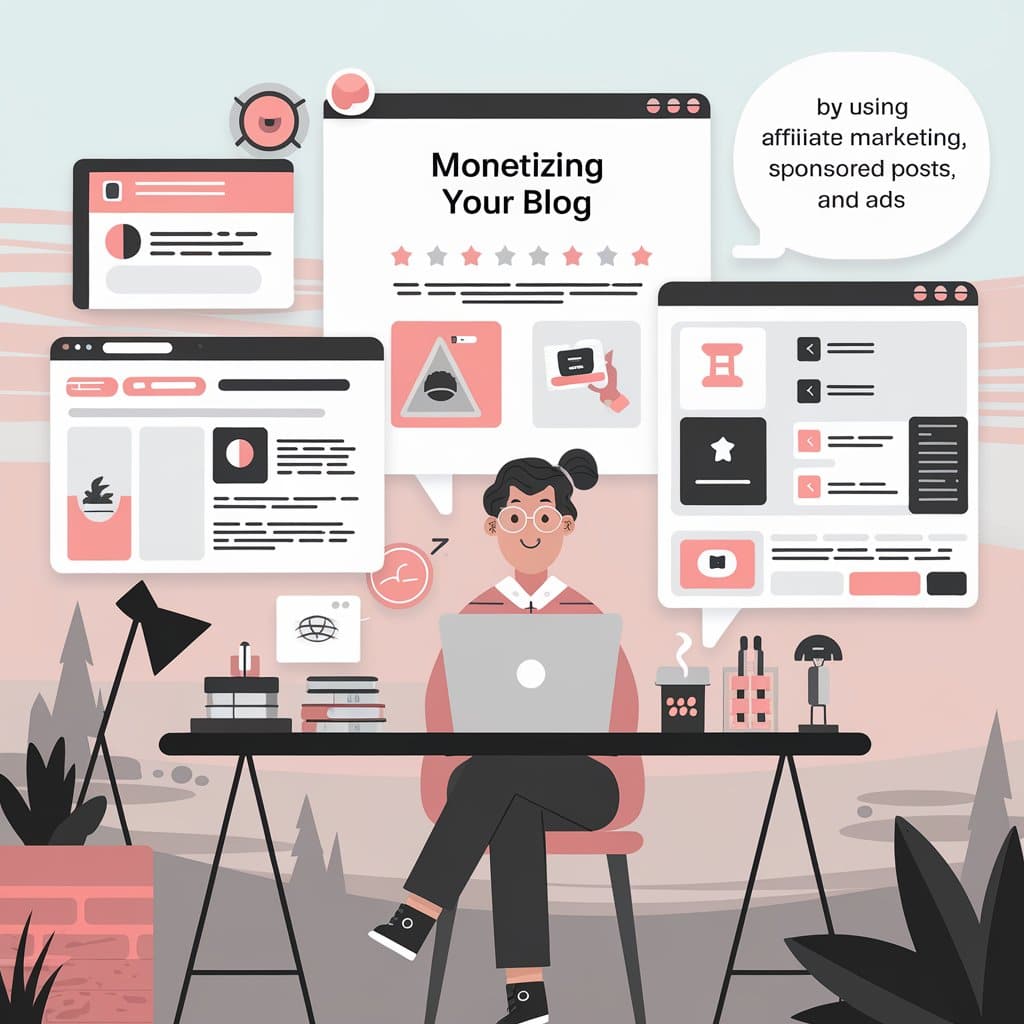
With your audience built and your blog going, it is time for the next step: understanding various monetization strategies. The two most common and coolest ways to make money with blogging are affiliate marketing and sponsored posts. Each of these approaches has its advantages and requires different ways of implementing the strategy to achieve success.
Affiliate Marketing
Affiliate marketing essentially involves partnering with brands for promoting their products or services in return for receiving some commission related to sales generated through your referral. Here are some key elements of successful affiliate marketing:
Choose the Right Products: Select affiliates that come within the blog’s niche and the interests of the audience for increasing the chances of conversion by promoting ,relevant and valuable products.
Sign Up to Affiliate Programs: Join some good affiliate networks like Amazon Associates, ShareASale, or CJ Affiliate. Each of these mentioned platforms connects bloggers with various different brands that offer affiliate opportunities.
Create Real Content: Honest reviews or recommendations based on your experiences with a product. Loyal readers appreciate honesty and experiences that may further encourage them to purchase something through a link.
Add Strategic Links: Affiliate links should be added in relevant content, whether that be blog posts, product round-ups, or resource lists. Also, call-to-action buttons can help direct attention to encourage clicking.
Performance Tracking: Make use of analytics for tracking clicks and conversions, among other determinants of overall performance. Such information should give meaning to future content strategy and help in further optimization.
Meanwhile, you effectively earn money with the help of your blog by recommending different products to your audience with the help of affiliate marketing.
Sponsored Content
The meaning of sponsored content is collaboration with certain brands for developing sponsored posts that support any particular product or services. Here, compensation is necessary either in the form of money or free products. Following is how you can successfully incorporate sponsored content:
Build Credibility: More often than not, brands would want to work with bloggers who have built a good reputation and have a following. Therefore, you need to create quality content and be able to publish regularly.
Reach out to brands: Once you have built an audience of engaged readers, then you can begin reaching out to brands in your niche of operation for possible collaborations. You may also register with one of the many influencer marketing platforms that connect bloggers with brands.
Create Sponsored Posts that Are Real: It means you have to write the sponsored content in a manner that will sound like your blogging voice and style. Disclose your sponsorship to your audience in a manner that will comply with guidelines set by the FTC.
Get Your Audience to Engage: Allow your readers to engage with your sponsored post by either asking questions or calling them to share an experience. Audiences that are engaged are more likely to participate in whatever promotions there are at hand.
Filter out any sponsored opportunities: Before accepting the sponsored post, explore that brand’s credibility and whether or not the content will match your values. Quality partnerships build up your credibility, but poor ones can tear down your reputation.
You can make sure that monetizing your blog incorporates affiliate marketing and sponsored content without compromising the mission of your blog. By doing so, you will have multiple streams of revenue while staying true to your mission. These methods not only generate income but also provide merchandise and services valuable to your readers, enhancing their experience of blogging.
Analysis and Improvement
Once setting up the blog and having your readers, the most important thing would be to work on performance analysis through which you’ll make constant updates to your content and strategies. This helps in being relevant and responsive to the needs of the readers. In this regard, this section shall discuss the importance of analytics tools and feedback.
Analytics Tools
Analytics can provide insight into your blog’s traffic, audience behavior, and performance of its content. You can utilize such tools by making informed decisions in enhancing and upgrading your blogging strategy. Here’s how to effectively make use of analytics:
Google Analytics: This is one of the most utilized analytics monitoring tools for websites. It provides comprehensive data on the following aspects:
Sources of Traffic: Understand where your visitors are coming from, be it organic search, social media, or referral traffic.
User Behavior: Understand how the users of your blog interact with it. Learn which pages are accessed most and estimate how much time a reader spends on each of your posts.
Demographic Information: Knowing the age, sex, and interests of your audience will let you create relevant content to attract them.
Setup Goals: Google Analytics also lets you set up goals such as newsletter sign-ups or purchases of a product. Monitoring these goals helps in measuring how effective your content and marketing strategies are.
Engagement metrics might include things like bounce rate, pages per session, and average session duration. A high bounce rate may mean a fit isn’t exactly right with your audience; a low pages-per-session ratio can show problems with the content.
By periodically looking at analytic data, you’ll get to identify trends, perfect your posts, and even switch out content strategy to fit what serves the needs of your audience best.
Feedback Seeking
Valuable as analytics are, perhaps the focus should shift to qualitative feedback from your readers. Feedback will provide a more profound understanding of what your audience enjoys and wants more of. Consider the following approaches to gathering feedback:
Reader Surveys: Design small surveys that ask about specific topics, desired content, and overall experience. With tools like Google Forms or SurveyMonkey, this can be easy.
Commenting: Leave comments on your posts. Let readers share thoughts and experiences related to the post. You can even find a way to interact with them to build a community of loyalty.
Leverage Social Media: Use social media in asking for responses. You may create polls or questions that relate to the posts you have created or will be creating. Such interaction will keep them engaged and valued.
Guest Posting/Collaborations: Guest bloggers writing in or collaborating with other people within your niche brings new ideas into the fold. This perhaps might reveal new insights about what your audience’s interests really are.
Feedback seeking and the use of analytics tools do not build a proper understanding of your audience but also serve to help in bending and evolving the blog. Active data analysis, incorporation of reader insights into practice, will create such a blog that resonates well with an audience that keeps growing.
Conclusion
This ultimate guide to blogging ends here, but now it is time for the reflection of each discussed aspect and how they will interlink in your blogging journey. By the end, you will have set up a successful blog that attracts readers, fosters engagement, and earns you money.
Comparison of Different Blogging Platforms
Choosing the right blogging platform is pivotal to your success. Here’s a quick comparison of some popular options discussed earlier:
| Platform | Ease of Use | Customization | Monetization Options | Ideal For |
|---|---|---|---|---|
| WordPress | Moderate to Difficult | Highly customizable | Affiliate marketing, ads, products | Bloggers looking for flexibility |
| Blogger | Easy | Limited | Ads, affiliate marketing | Beginners and casual bloggers |
| Wix | Very Easy | Moderately customizable | Ads, affiliate links | Visual-based and engaging blogs |
| Tumblr | Easy | Basic | Limited monetization | Casual and multimedia blogs |
| Drupal | Difficult | Extremely customizable | Ads, affiliate links | Advanced users and developers |
| Joomla | Moderate | Fairly customizable | Ads, affiliate links | Those needing multilingual support |
When selecting a platform, consider your technical Specialization, desired customization level, and the specific needs of your blog.
Frequently Asked Questions
1. How long does it take to start a blog?
Starting a blog can take as little as a few hours, from choosing a niche to setting up the platform. On the other hand, creating quality content and growing your audience actually takes time and dedication.
2. Do I need to possess technical skills to start blogging?
Not necessarily, as most blogging platforms allow even a novice to manage their websites with ease. Correspondingly, some basics of SEO and content management would be helpful.
3. Do I have an opportunity to make my blog monetized immediately?
Yes, you can immediately start monetizing, but this usually takes some time as a blog requires getting more audience and authority.
4. What do I write about?
Focus on topics that remain in your niche, interest your target audience, and of course, bring in your Specialization. Brainstorm content to create something of value or solve problems for your readers.
5. Do any costs apply with blogging?
While free blogging can be done through Blogger or Tumblr, putting money into a really good domain, hosting provider, premium themes, or plugins will indeed pay dividends toward the professionalism and performance of your blog. In conclusion, setting up a blog is one of the most exciting things to do in life, really full of possibilities. You can go ahead with the best platform, create riveting content for your audience, and begin to build it by selecting the right platform for your work, creating riveting content, and by building an active audience you can create a successful blog that will resonate with readers and meet your goals. Enjoy the process and embark on a journey of sharing your voice with the world!

